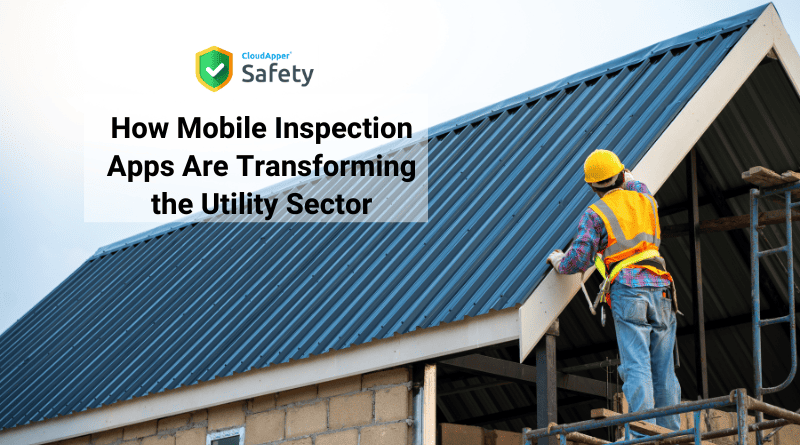Table of Contents
Regular inspections are crucial to the monitoring and maintenance of power lines, pipelines, and other utility assets. In addition to detecting damage, inspections are important for identifying overgrown vegetation, encroachment, vandalism, theft, and security risks.
Today, mobile applications are transforming the inspection process for utilities. Smartphones and tablets are accelerating, improving, and reducing the cost of inspections.
How Mobile Inspections Work
A ground team or a helicopter are commonly used to do utility checks. In the past, information was gathered on a paper form, submitted to the office, and then manually entered into a database or spreadsheet for analysis. In the event that pictures were taken during the inspection, they were manually uploaded and included in the inspection report. Everyone involved must invest money and effort in the process, which is why many utilities are turning to mobile solutions.
Mobile apps provide real time monitoring and remote completion of inspections. Inspectors can use a smartphone or tablet to record data in real-time when they are on electricity lines, equipment towers, or flying above right-of-ways in a helicopter. High-quality pictures can also be attached by inspectors to give a clearer picture of any issues they find.
Increasing efficiency
It is simple to understand why mobile technology is appealing to so many utilities. They can perform faster and more precise inspections thanks to mobile apps. Crews can perform more inspections in less time when they are equipped with cellphones or tablets. Utility companies, who are suffering from a severe lack of trained staff, will greatly benefit from this.
Apps not only expedite work in the field but also reduce office time. Eliminating data double-entry offers higher accuracy, more timely knowledge, and more effective information management across a vast service area. Instead of needing to wait for data entry, inspection reports are immediately available the same day.
Utilities may streamline operations and speed up reaction times by having up-to-date information at their fingertips. For instance, programs can be set up to notify a specific user via email when a leak is discovered and to automatically trigger a task to begin the repair process.
Improving accountability and monitoring
Recent occurrences, such as the 2018 Camp Fire, which claimed 85 lives and destroyed 19,000 structures, have brought to light issues with present inspection practices. It’s far too simple for problems to slip through the cracks and only come to light during the course of a lawsuit. Even PG&E admitted that “more has to be done to adapt to and handle the growing hazard of wildfires and harsh weather,” including improved inspections.
A way to increase responsibility and guarantee follow-up on corrective actions is through mobile apps. Apps promote transparency by making data easily accessible throughout the company, in contrast to paper inspection forms that get lost in a file drawer somewhere. Escalations and reminders can also be set up to make sure that repairs are carried out all the way to the end.
Cost savings
By just monitoring and maintaining their assets more efficiently, utilities can save a lot of money. Before they become a problem, they may spot possible problems like rusting and overgrown plants.
Additionally, having all of their inspection data in one location gives utility decision-makers the ability to organize repair work according to priority. They can quickly take care of significant problems while moving other urgent repairs along. Issues of a low priority can be resolved as resources become available.
Conclusion
Utilities are using mobile apps to save time, cut expenses associated with inspection and maintenance, and ensure that crucial concerns don’t go unnoticed.
Mobile inspection technologies are already being used by numerous utilities. Expect to see more utilities embracing mobile solutions as the risk from storms, wildfires, and other climate-related calamities rises. According to Verdantix, 74% of EHS leaders anticipate employing mobile applications in their business processes in 2019. It’s a part of a larger shift toward modernizing and digitizing business operations at utilities that we’re seeing.
What is CloudApper AI Platform?
CloudApper AI is an advanced platform that enables organizations to integrate AI into their existing enterprise systems effortlessly, without the need for technical expertise, costly development, or upgrading the underlying infrastructure. By transforming legacy systems into AI-capable solutions, CloudApper allows companies to harness the power of Generative AI quickly and efficiently. This approach has been successfully implemented with leading systems like UKG, Workday, Oracle, Paradox, Amazon AWS Bedrock and can be applied across various industries, helping businesses enhance productivity, automate processes, and gain deeper insights without the usual complexities. With CloudApper AI, you can start experiencing the transformative benefits of AI today. Learn More


















